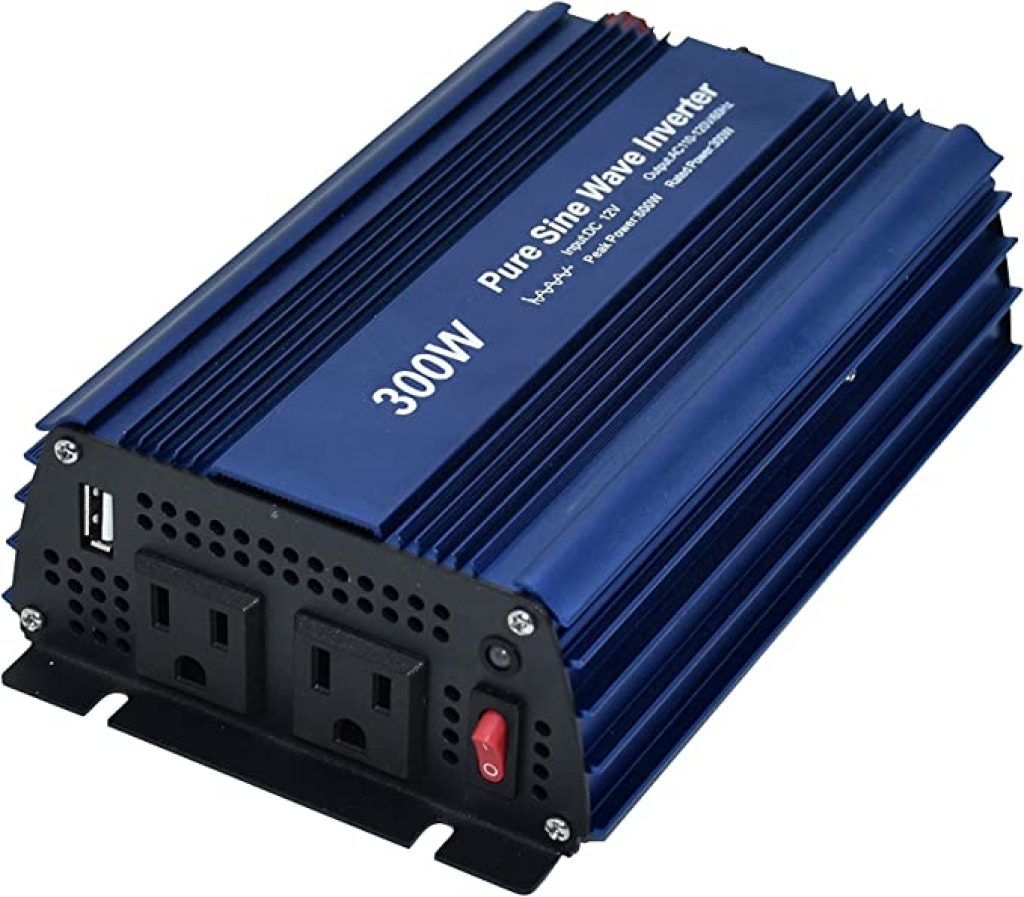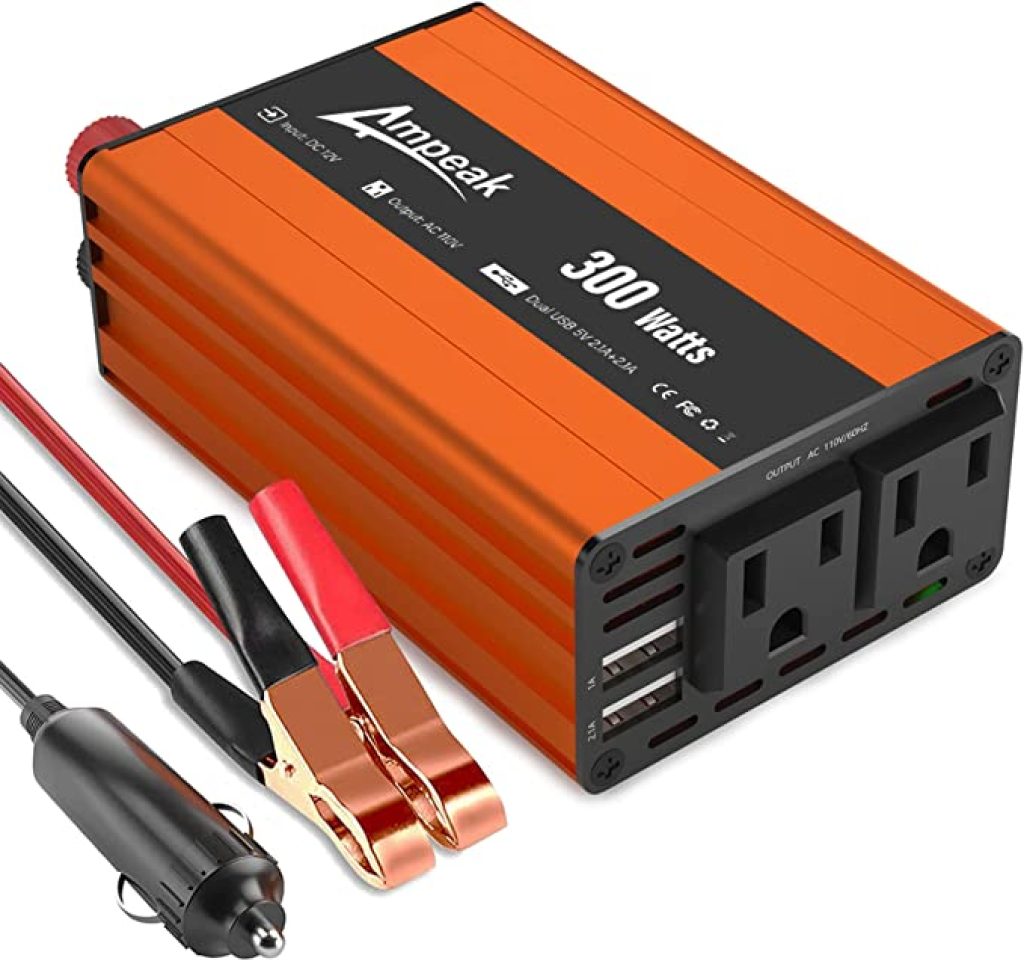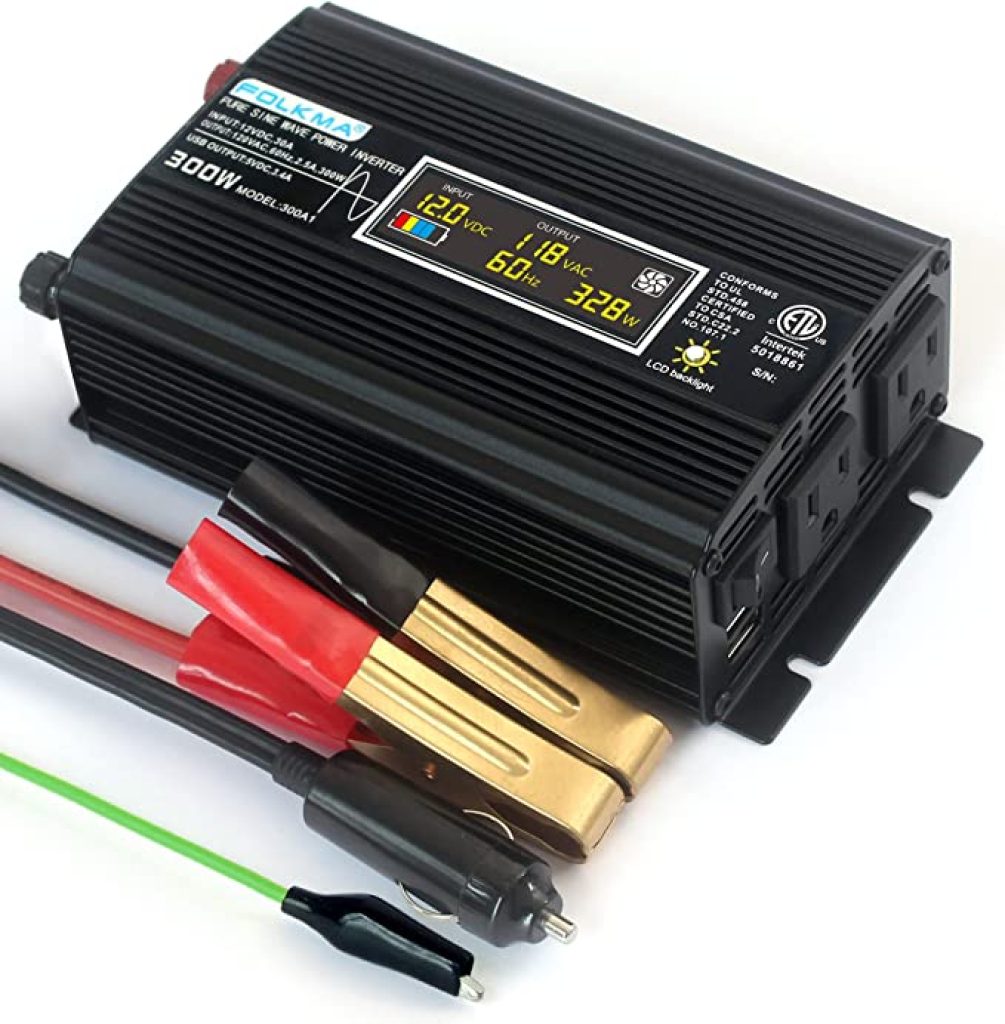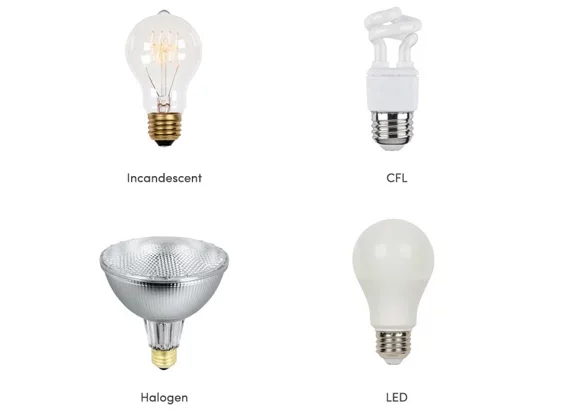An inverter is a crucial component of any solar power system. But before you jump into purchasing one, you need to ensure you size it correctly. If you neglect to size your inverter accurately, you may struggle to run appliances such as your TV and lights.
Inverters are rated by wattage (how much AC power they can provide) and come in various sizes. Such a wide range of sizes can make it challenging to find a suitable inverter for your needs.
In this post, we provide the formulas and working examples you’ll need to help you size an inverter for your TV and lights.
Table of Contents
Inverter Size Needed To Run A TV And Lights
Generally, a 300-watt inverter should be enough to run your TV and household lights. More specifically, a 300W inverter is big enough to run an average-sized LED TV, which requires between 80W–130W, and about five LED lights, which need between 9W–15W each.
But how did we reach this number?
Here’s an essential piece of information regarding sizing an inverter — you should size it according to how much power your AC appliances draw.
But remember, your inverter should be big enough to run all your appliances simultaneously. Therefore, you must consider the total power required by the devices (the sum of their wattages).
Example 1.
Let’s say you have 5 LED lights that draw 15W each and a TV that draws 130W:
Wattage Required To Run Five LED lights: 5 lights x 15W = 75W
Total Wattage Needed: LED lights + TV = 75W + 130W = 205W
Based on the above calculations, the wattage you’ll need to run your TV and lights is approximately 205W. However, this does not mean you must have a 205W inverter.
Why?
You should always account for inefficiencies/losses to accurately size your inverter. Therefore, once you calculate the wattage you need to power your appliances, add an extra 40% (multiply the total power by 1.4).
Here’s a formula you can use to size your inverter:
Inverter Size (W) = Total power required by appliances (W) x 1.4
Inverter Size (W) = 205 W x 1.4 = 287 W
Therefore, in this scenario, you’ll need a 300W inverter to run your TV and lights.
However, if you plan to run more energy-hungry lights or a large ultra-high definition (4K/8K) TV, you should install a larger inverter — possibly a 500W inverter — to be on the safe side.
300-Watt Inverter To Run A TV And Lights
Here are a few examples of 300W inverters which are perfect for running low-wattage appliances, such as chargers, phones, laptops, kindles, iPads, lights, TVs, etc.

Product Link

Product Link

Product Link
Why Do I Need An Inverter?
Typically, everyday appliances consume AC power.
When you’re at home, you plug your TV into an AC outlet, which will work properly. However, for off-grid setups, your typical power sources provide DC power—batteries, solar panels, etc.
Therefore, you’ll need an inverter from DC power sources to run AC appliances, such as a TV and lights.
This fantastic device converts direct current (DC) into alternating current (AC), providing the power needed to run your AC devices.
How To Calculate What Size Inverter You Need
Inverter size depends on the wattage of the devices you want to power.
While sizing an inverter to run your TV and lights, it is vital to consider the rated wattage of these devices.
The wattage varies according to the size and type of TV and lights and how many are running.
Now let’s look at some work examples that will help you calculate the correct size inverter.
Example 1.
- Smart 4K 43″ TV: 12W
- Three LED lights: 15W each
Step 1: Calculate the total power consumed by the appliances you want to run with the inverter:
Total Power (W) = 120 W + 3*15 W = 165 W
Step 2: Consider system inefficiencies:
Inverter Size (W) = Total Power Consumed By Appliances (W) x 1.4
Inverter Size (W) = 165 W x 1.4 = 231 W
Therefore, the minimum size inverter you’ll need to power the devices safely is 231W. You’ll find 250W or 300W inverters on the market for this purpose.
Example 2
Now let’s consider other wattages for TV and lights:
- Neo QLED 8K Smart TV 85″: 249W typical power consumption (520W maximum power consumption)
- Two incandescent lights: 40W
Step 1: Calculate the total power consumed by the appliances you want to run with the inverter:
Total Power (W) = 249 W + 2*40 W = 329 W
Step 2: Consider system inefficiencies:
Inverter Size (W) = Total Power Consumed By Appliances (W) x 1.4
Inverter Size (W) = 329 W x 1.4 = 461 W
Therefore, the minimum size inverter you’ll need to power the devices safely is 461W. You’ll find 500W inverters on the market for this purpose.
Average Wattage Of Different Light Bulbs
Numerous light bulbs exist. Some require less power than others while providing the same “amount of light.” This directly impacts what size inverter you’ll need.

We prepared a table showing how much power each type consumes, according to the amount of light they provide (rated by lumens).
| Type Of Lights | 220 – 250 lumens | 410 – 560 lumens | 700 – 800 lumens | 920 – 1100 lumens | 1330 – 1600 lumens | 2600 lumens |
|---|---|---|---|---|---|---|
| Incandescent | 25 W | 40 W | 60 W | 75 W | 100 W | 150 W |
| Halogen | 18 W | 29 W | 43 W | 53 W | 72 W | 100 W |
| CFL | 6 W | 10 W | 13 W | 18 W | 23 W | 42 W |
| LED | 4 W | 9 W | 12 W | 15 W | 18 W | 30 W |
As you can see, LED lights consume less power per lumens than other light bulbs.
Therefore, LED lights are best for off-grid solar setups or general energy savings.
Average Wattage Of TVs
The size of your inverter should be enough to provide the continuous power required by your TV. Therefore, you must know your TV’s wattage.
Here are examples of TVs and their rated wattage for reference:
| TV model | Size | Wattage |
|---|---|---|
| NEC – E328 | 32″ | 31W |
| SAMSUNG Class TU7000 | 43″ | 120W |
| PHILIPS – 50HFL6214U/27 | 50″ | 155W |
| LG 70UP7750 4K UHD LED | 70″ | 210 W |
| QN900A Samsung Neo QLED 8K | 85″ | 249 W |
Notice that the bigger the TV, the higher the wattage (that’s not always true, but it is for most cases). Therefore, if you don’t want to get a large inverter, consider using an average size TV (from 40″–50″).
However, if you want a big screen, use an equivalently big inverter.
Final Thoughts
Your inverter needs to be large enough to handle your power demands easily. In other words, your inverter needs to provide enough continuous AC power to run all the appliances you wish to run simultaneously.
You need to calculate the total power consumed by your TV and lights and account for system inefficiencies (adding 40% to the total power required).
In addition, make sure that the input voltage of your inverter matches the output voltage of your DC power source (for example, use an inverter with an input voltage of 12V for a 12V battery).
If you still have questions about this topic, don’t hesitate to reach out to us in the comment section below. We’ll be happy to help!

